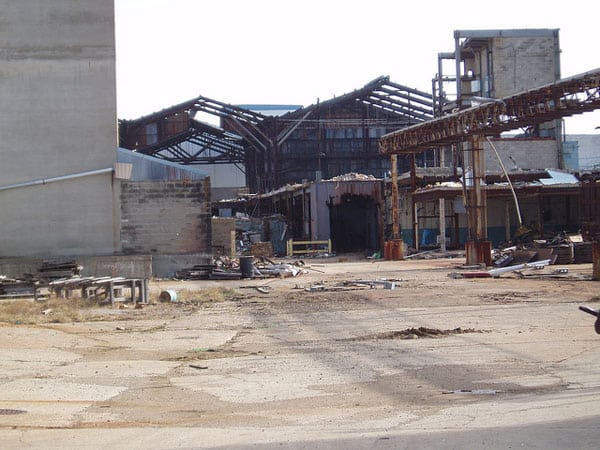
August 16, 2018; Shelterforce
Big cities may be growing, but, as Alan Mallach notes in Shelterforce, many smaller cities of 25,000 to 150,000 people “are struggling, particularly places like Trenton, New Jersey or Youngstown, Ohio…numbering in the hundreds, those places form an archipelago of mingled revival and distress which—although most heavily concentrated in the industrial Midwest—stretches from coast to coast.”
Mallach makes these remarks as part of a book review essay. One book he focuses on came out last year: Brian Alexander’s Glass House: The 1% Economy and the Shattering of the All-American Town. Alexander looks at the city of Lancaster, Ohio, “and the evisceration of the town’s flagship manufacturer, iconic glassmaker Anchor Hocking.”
Lancaster, Ohio is a working-class town with a little over 40,000 people. Located around 30 miles southeast of Columbus, Lancaster’s population is 93.6 percent white, with a modest median household income of $38,625—well below the national median of $61,500. The poverty rate is estimated at 20.5 percent.
One key observation Mallach makes is that the creation of the “Rust Belt” actually took place in two stages. The first—and better known—stage occurred in the late 1970s and early 1980s and is marked by such developments as the shutdown of Youngstown Sheet & Tube in 1977, a time when the layoff of 5,000 workers could make front-page national news.
But then, Mallach adds, manufacturing unemployment actually “stayed reasonably stable through the 1980s and most of the 1990s.” US manufacturing did not recover to its glory days, but jobs were steady. Then, the second shoe fell. Between 1998 and 2010, “the United States lost over six million manufacturing jobs, or roughly one out of every three factory jobs in the country.” Eight years later, only a million of those jobs have come back, Mallach adds.
Sign up for our free newsletters
Subscribe to NPQ's newsletters to have our top stories delivered directly to your inbox.
By signing up, you agree to our privacy policy and terms of use, and to receive messages from NPQ and our partners.
Mallach acknowledges that some plant closures surely would have occurred without predatory financial practices, but he insists that “Wall Street firms, variously known as corporate raiders, venture capitalists, private equity funds, or leveraged buyout specialists, systematically turned company after company into piggybanks, milking them for unconscionable fees while loading them with ever-larger amounts of debt, collecting the profits while saddling the companies with unsustainable repayment burdens, ultimately destroying firms that without those burdens would have still been able to make a competitive product at a reasonable profit.”
Anchor Hocking in Lancaster, Mallach adds, “became the victim of the predatory capital game, passed like a hot potato from one investor to another, its various parts spun off and increasingly loaded with debt. Once the city’s mainstay employer, it still exists after going through two rounds of bankruptcy, but as a shadow of its former self, employing only 900 or so people instead of the 5,000 who once worked there.”
As Aimee Picchi reported for CBS News, Anchor was largely shielded from global competition. Glass, Picchi writes, “is relatively resistant to foreign imports because it’s heavy and breakable, so it’s still largely economical to manufacture glassware in the US and ship it domestically.”
So, it wasn’t globalization that did Lancaster in. Rather, it was financialization. Alexander, building off the research he conducted for his book, explains how this took place in the Atlantic:
Anchor Hocking was sold off in a debt-financed buyout to the huge private-equity firm Cerberus Capital Management. The company promptly fell into bankruptcy, out of which it was sold in another debt-financed buyout to a much smaller private-equity firm called Monomoy Capital Partners. There was a forced marriage with the silverware company Oneida, then an initial public offering after which the stock soon tanked. In quick succession came a shutdown, a notice (in accordance with the Worker Adjustment and Retraining Notification Act) that the place might close for good, a second bankruptcy during which the former creditors became the equity owners, and countless leadership rotations. During the past 15 years, it’s had three different corporate owners.
According to Picchi, former Anchor Hocking CEO Sam Solomon explained the process to Alexander this way: “It’s not about making product. It’s about making money appear, and the 99 percent don’t understand that.” And that, adds Picchi, is why poverty levels in Lancaster are about double the level they were in 1999, back when Anchor Hocking was still in local hands.—Steve Dubb













